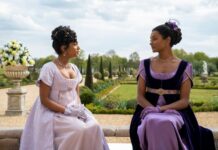Spoilers
From “Days of Being Wild,” “Chungking Express,” “Ashes of Time” to “Fallen Angels,” Wong Kar-Wai released some of the decade’s most definitive work of the nineties — many of which are now among the most revered to date. His disregard for traditional narrative coupled with hyper-stylization established the Hong Kong film director as one of the most original artists of his time. In 1998, Wong capped off the decade with “Happy Together,” which traced the tumultuous on-again, off-again relationship of two Hong-Kongers, Fai (Tony Leung) and Po-Wing (Leslie Cheung). Their journey to the Iguazu Falls took a turn when they ran out of money and became stranded in Buenos Aires, ultimately leading to their breakup.
Separated, the two men settled in their new home in two different ways — both aimless. The solemn Fai worked as a doorman at a tango bar and later as a chef trying to earn money to return to Hong Kong. Po-Wing was more freewheeling, seen with different men at different nights. The two crossed paths multiple times but did not say a word to one another. They refused to acknowledge each other’s existence, but the frequency of such encounters said otherwise.
Leung’s and Cheung’s performances were striking here — Leung’s face hardening as he toiled in a dead-end gig but softening as he dared to catch a glance at Po-Wing. Later, we see the feeling was reciprocal when Po-Wing left with another man in a taxi, looking back at Lai while ruefully lighting a cigarette.
These scenes were shot in black and white by cinematographer Christopher Doyle, the monochrome expressing each individual’s isolation and the despondency of the two’s geographic emplacement. It’s only when Po-Wing returned to Fai seriously injured that the black and white shifted into saturated color, inundated with humid yellows — the introduction of color marking a reconciliation between the two lovers. Fai tended to Po-Wing in his apartment, and though the two were physically together, jealousy threatened the possibility of rekindling a broken past. The camera movements Doyle managed to execute in such confining rooms is impressive, like in the scene where the two practiced tango, the camera rocked back and forth — the movements were technically graceful — but only furthering a sense of instability.
In addition to impeccable camerawork, Wong’s expressive filmmaking was how mundanity and time, two inseparable things, were presented. In “Happy Together,” time moved lethargically. The phrase “let’s start over” opened the film and was whispered numerous times. The same corner street where Lai worked was returned to numerous times. Clocks were frequently shown. These symbols all came to emblematize the two’s relationship — a state of limbo that Lai and Po-Wing were unable to break out of. Only in moments of great intimacy and honesty did time deviate. Step printing, the act of duplicating frames to achieve a slow, drawn out effect, was used when the two lovers embraced. It’s a different type of limbo — one that is instead meant to suspend a transient moment in time. When the embrace broke, “normal” time was cruelly returned to.
Wong’s evocative portrayal of mundanity through these repetitive and fragmented actions became incredibly potent as the film progressed. Both Lai and Po-Wing longed for something greater, and when it became clear that their relationship was not the answer to fulfilling such desires, the mundanity, which was once yearnful, became painful. Wong’s ability to navigate through complicated feelings of disappointment and regret in the final act was perhaps the rawest he’s ever been. Like his other work, and even more so with his subsequent film “In the Mood for Love,” Wong used formal elements in unique ways, working from the outside in rather than surfacing the narrative with it. And with “Happy Together,” the result was a dizzying depiction of love gained and love lost.








